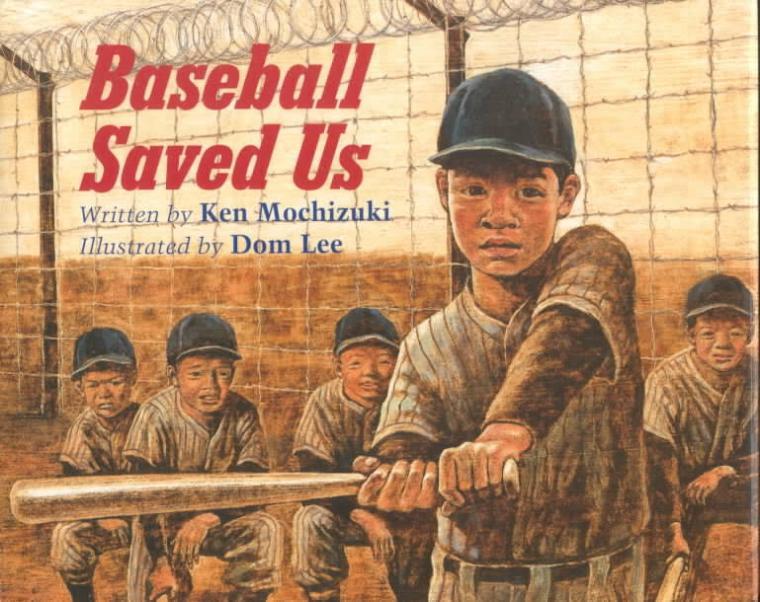
Read Aloud Book: Baseball Saved Us
Story: Ken Mochizuki
Illustration: Dom Lee
ISBN-13: 978-1880000199
C3 Framework Key term: Human rights: Rights or freedoms possessed by all people by virtue of their being human.
Synopsis
A young boy tells about how his life was interrupted by internment in a fenced camp in the desert. He notes the negative effects on his brother and his father determination to find a constructive activity for children and adults. Using scarce resources, everybody contributes their share and together build a baseball field. Coming back home after the war, the boy continues to face stereotypes and prejudice.
Discussion
Say: Executive order 9066 signed by President Roosevelt after the attack on Pearl Harbor mandated the relocation of all people of Japanese ancestry outside of the Pacific military zone. This zone included California and the parts of Washington and Oregon between the ocean and the Cascade mountains. While the order claimed it was a national security matter, it did not distinguish between US-born citizens and immigrants, children, elderly, women, and other vulnerable populations. Relocation centers were in remote places. Families had to share living spaces and had limited clothing and possessions. Ask: In a place that offered very little work and education opportunities, why was the baseball field important?
Ethics Connection
Distribute copies of Public Law 100-383 (1988) – Congress Apologies for the Relocation of Japanese-Americans in WWII. Say: When basic human rights are violated, apologies are not sufficient. But they are necessary and should reflect the commitment of society to learn from the past take action to prevent such violation from happening again. Apologies are essential for healing and reconciliation. Sincere apologies mark a turning point in relationships and efforts to protect human rights. In your table groups, discuss what a sincere apology should include. For example, what facts about the suffering of people should apologies include? How can the apology assure victims that steps have been taken to prevent from history to repeat itself? Provide feedback on students’ work. Comment on the inclusion of the following points:
1. A retelling of what happened.
2. Unambiguous condemnation of the actions.
3. Recognition of the scope of the damage.
4. Taking responsibility for repair, compensation, and prevention.
Conclude: Countries and states have apology laws that can prevent escalation of conflicts. The laws are necessary because officials or professionals may try to avoid an apology, claiming the harm was done unintentionally or by others. But like in personal relationships, apologies are necessary for rebuilding trust.
Challenge Activity
Invite students to hold a classroom debate on the question: Should state and local agencies also apologize for their role in Japanese internment? Prompt: While local officials did not shape the policy or signed the executive order, they played a roled by publicly advocating for the relocation of members of their communities. Say: in your arguments address all elements of an apology: retelling, condemnation, recognition of harm, and responsibility for reparation.
Fun Activity
Say: Collect information about The World Baseball Classic (WBC) – the international baseball tournament that includes 16 countries and territories. Bonus points: Answer the following question: Can international sports tournments promote world peace?
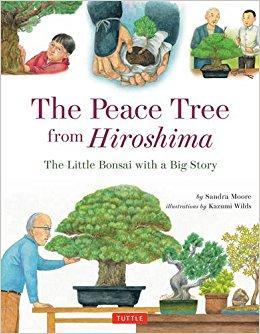
Read Aloud Book: The Peace Tree
Story: Sandra Moore
Illustration: Kazumi Wilds
ISBN-13: 978-4805313473
C3 Framework Key term: Triggering event: An event, sometimes unexpected, that has an immediate consequence, causing another event or process.
Synopsis
This story is told from the point of view of a white pine tree called Miyajima. A family that specialized in growing Bonsai trees cared for the tree for 300 years. The tree survived the atom bomb in Hiroshima in 1945. The tree’s life changed when it was given as a gift to the US for its two-hundredth birthday. The family proudly visited the tree at the National Arboretum in Washington DC.
Discussion
Show or distribute the following excerpt from U.S. Relations with Japan (US Department of State, January 25, 2017). “The United States established diplomatic relations with Japan in 1858. During World War II, diplomatic relations between the United States and Japan were severed in the context of the war that followed Japan’s 1941 attack on Pearl Harbor, Hawaii. After years of fighting in the Pacific region, Japan signed an instrument of surrender in 1945. Normal diplomatic relations were reestablished in 1952, when the Supreme Commander for the Allied Powers, which had overseen the postwar Allied occupation of Japan since 1945, disbanded. The Treaty of Mutual Cooperation and Security between Japan and the United States was signed in 1960.” Say: The bombing of Hiroshima was one of two atom bomb attacks that led to the end of World War II. President Truman authorized the use of the atom bombs to bring about Japan’s surrender. Today, Japan and the US are a model of post-war forgiveness and international collaboration. Ask: Do you think that the tree in this story can be used as a metaphor? What would the tree symbolize? Show the illustrations in the book and say: A bonsai (pronounced “bones-eye”) means a “tree in a pot.” Bonsai tree symbolize harmony between one’s soul and his/her natural environment. Harmony is represented through the aesthetics of the tree. Character strength is represented through the tree’s age and resilience.
Ethics Connection
Say: After World War II, both Japan and Germany adhered to ethical principles of foreign policy, including: (1) cooperating with other countries to address common challenges; (2) focusing on nonmilitary means to achieve national goals; (3) promoting supranational organizations such as the United Nations; (4) supporting human rights and international law; and, (5) renouncing weapons of mass destruction. In groups, select one of these five principles, and create a short presentation about the ethical value of this principle. You may use the following examples: World Health Organization (principle 1); The Organization for Economic Co-operation and Development (OECD) (principle 2); United Nations Educational, Scientific, Cultural Organization (UNESCO) (principle 3); United Nations Human Rights (principle 4); North Atlantic Treaty Organization (NATO) (principle 5).
Fun Activity
Distribute copies of the United States Department of Agriculture Tree Coloring Challenge. Say: Bonsai masters show great patience and perseverance when they care for the Bonsai trees. This tree challenge invites you to demonstrate the same virtues. At home, color the tree and pay close attention to all the fine details of the tree. Bring your work to class to share in our tree gallery.
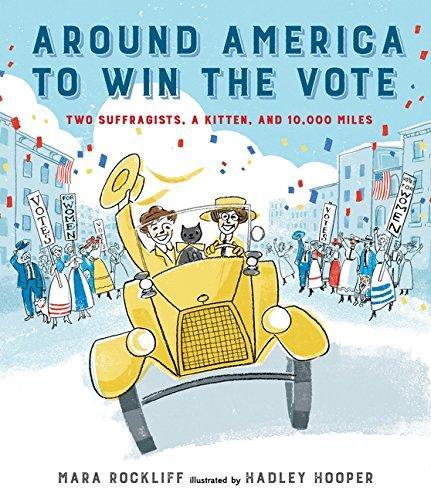
Read Aloud Book: Around America to Win the Vote
Story: Mara Rockliff
Illustration: Hadley Hooper
ISBN-13: 978-0763678937
C3 Framework Key term: Historical times: Time periods of different lengths, depending upon the scale and meaning of events, and the relationships between them.
Synopsis
Nell Richardson and Alice Burke had a plan. They would drive around the country and show all citizens that women can be both productive and intellectual, and both peace-loving and brave. If they see all these qualities in women, they would grant them voting rights. Nell and Alice (and their cat) drove in harsh weather conditions and on poor roads, in a car that was made in the very early days of the car industry. They did not give up until they circled the nation and returned safely to New York.
Discussion
Contextualize: The women’s suffrage movement in the US began in the 1840s and continued through the 1920s. It ended with the ratification of the 19th Amendment granting women the right to vote. It led to increased representation of women in the Congress. In 1922, one woman (for a short period of time) and 99 men comprised the US Senate. But women representation has increased over the years. In 2017, 105 (78 democrats, 27 republicans) women hold seats in the United States Congress, comprising 19.6% of the 535 members; 21 women (21%) serve in the United States Senate, and 84 women (19.3%) serve in the United States House of Representatives. Ask: What made Nell Richardson and Alice Burke take this long and dangerous road trip? Write on the board “E Pluribus Unum.” Explain: This phrase, Latin for "out of many, one," is part of the Great Seal of the United States, that means: out of many states, one country. An additional meaning, is the representation of ALL American people under one government. Ask: Would granting women the right to vote make this phrase truer? Conclude with the moral argument raised by President Woodrow in his September 30, 1918 speech to the Senate.
Ethics Connection
Say: In your table groups, pretend you are back in the early 1920s and debating women’s right to vote. Listen respectfully to others’ opinions and do not talk out of turn. The purpose of this debate if to gain an understanding why it took so many years to grant women the right to vote. Provide students with examples of both sides of the debate. Say: Anti-suffragists arguments included: 1. Because women did not serve on jury duty or in the armed forces, they should not make the laws these institutions enforce. 2. Because many women did not join the movement, women did not really want to vote. 3. Women’s vote are redundant. Women can express their opinions through their fathers, brothers, husbands, and sons. Their job is to nurture others, so others can represent them. Suffragists arguments included: 1. All those who obey the law should participate in law making. 2. There are laws that discriminate against women and women representatives can help amend them. 3. If women can influence public policy they will be treated with greater respect and equality.
Fun Activity
Say: Imagine you are a reporter assigned by your editor to write a front page article about the ratification of the 19th amendment on August 26, 1920. Use the Congress resolution document to write a 200-word piece. You can review real examples, such as the New York Time’s article, “Colby Proclaims Woman Suffrage,” to consider the writing style for your article.
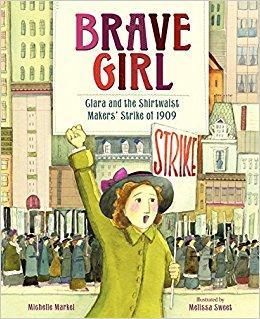
Read Aloud Book: Brave Girl
Story: Michelle Markel
Illustration: Melissa Sweet
ISBN-13: 978-1629238340
C3 Framework Key term: Unemployment: A condition where people at least 16 years old are without jobs and actively seeking work.
Handouts
Language Barriers in the Workplace (PDF version only)
Download and Print the PDF
Synopsis
Clara Lemlich is a young immigrant girl who comes to New York with her family. She becomes a garment worker and works alongside other immigrant girls to make clothing. These girls work long hours and are paid very little. Clara urges other workers to fight for their rights. She motivates women to protest factory conditions. Note: Educators may show the documentary, Clara Lemlich, by Icarus Films.
Discussion
Provide a historical summary: In 1909, Clara Yemplich helped to set off strikes of young women garment workers. These strikes spread from New York to other big cities including Philadelphia, Cleveland, and Chicago. Some manufacturers increased the wages of the workers. In the vast majority of cases, the wage increases were small and other working conditions, including safety, did not improve. Ask: Think about Clara’s speech at the union meeting. What is notable about her behavior? Say: Before Clara, both men and women unions did not believe that young immigrant workers could sustain a strike. They thought that being a woman, young, and in desperate need of income, would end the strike almost immediately. Ask: In what ways was the 1909 strike an important milestone in history?
Ethics Connection
Say: Two years later, on March 25, 1911, a tragedy happened in the Triangle Shirtwaist factory. This factory employed about 700 workers, most of them were young immigrant women. The workers spent 13-hour days at the factory in crowded conditions and made $6 a week. The supervisors locked the doors from the outside. There was almost no ventilation, and the walls and ceilings were covered with fabric and completed shirtwaists. The fire spread quickly. There was only one fire escape, which collapsed. Machines and tables blocked exit routes. The fire killed 146 women and girls. Write on the board: “Employer Responsibility.” Say: In groups, create a poster that lists and illustrates the actions that employers should take to protect their workers. Consider employees’ needs, including translation to multiple languages and conducting fire drills to ensure all safety conditions are met. You may use the summary of safety laws on the US Department of Labor website and add your ideas to the list. Conclude by pointing at the virtues represented by safety ethics including value for human life, commitment to protecting the well-being of others, compassion, fairness, and accountability.
Fun Activity
Say: Many of the garment workers in the early 1900’s were immigrants who could not communicate effectively about their working conditions to people who didn’t speak their language. Employers used this language barrier to exploit immigrant labor. This activity will help you understand the difficulty of language barriers. Distribute the attached worksheets and ask students to simulate the experience of new immigrants in a factory. When everyone is done, invite students to compare their understanding of the instructions, and to share the insights they have gained from the activity.
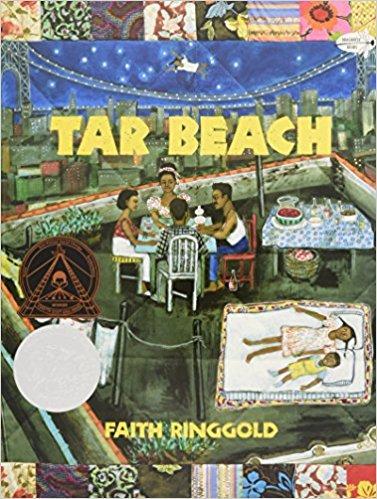
Read Aloud Book: Tar Beach
Story: Angeline Sparagna LoPresti
Illustration: Phyllis Hornung
ISBN-13: 978-0780768567
C3 Framework Key term: Unemployment: A condition where people at least 16 years old are without jobs and actively seeking work.
Handouts
Poster handout (PDF version only)
Download and Print the PDF
Synopsis
Cassie lives in Harlem with her parents and brother. On hot summer nights, she likes to spend time on the roof with her family. She likes to dream that she is flying above the tall buildings of New York City. Flying above a building is a way of becoming an owner—a solution to her parents’ concerns about employment and income.
Discussion
Check for comprehension: What is Tar Beach? Affirm: Tar Beach is the black tar roof where Cassie’s family spent time in the summer. At those times in East Harlem, many people would spread their blankets on the rooftops and sunbathe as though they were on the beach. Provide context for the story by saying: Cassie was born in 1931; she grew up during the Great Depression. During that time, many people lost their jobs and had trouble finding work. African-American workers like Cassie’s father were not protected by the labor union. African American employees worked for lower wages and benefitted less than white people from President Roosevelt’s New Deal laws, which provided economic support to people in need. The New Deal proposed a new social policy at the federal level (as opposed to the state or county level). It focused on the needs of specific groups including the unemployed, women, children, laborers, and artists.
Ethics Connection
Say: Cassie’s father was hoping to join the union one day, to be better protected by the union agreements with employers. During the Great Depression, several court cases dealt with issues concerning workers’ rights to a fair wage and healthy working conditions. Show the 3-minute video about the Liberty of Contract, which protected employers. Say: Today, we will conduct debates based on a true court case. Share the facts: Joseph Tipaldo was the manager of a laundry business in New York. He paid nine laundry women only $10 a week, in violation of the New York State minimum wage law, which aimed to reduce exploitation of women by paying them an unreasonable wage which does not reflect the work value and amount of labor. When forced to pay his workers $14.88, Tipaldo forced the women to pay the difference. When Tipaldo was jailed on charges of violating the State law, his lawyers argued that the law was unconstitutional and the wage Tipaldo paid met the minimum cost of living necessary for health. The Supreme Court voided the law as a violation of liberty of contract. Say: In your table group divide up, so some will support the prosecutor (representing Tipaldo), and some will take the side of the defender (the state of New York).
Fun Activity
Distribute the poster handout (included in this lesson plan). Say: Design a poster about workers’ rights. You may address one or more of the following topics: minimum wage, the maximum number of hours per week, a safe work environment free of potential hazards, and the right to become a union member. You may add illustrations, but you should focus on the message. Your message should include at least one of the following: 1. A list of rights workers should have; 2. Facts and statistics related to the importance of workers’ rights; 3. The meaning of “Equal opportunities employer.”
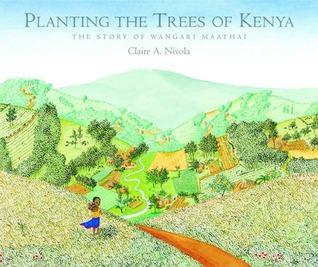
Read Aloud Book: Planting the Trees of Kenya
Story: Claire A Nivola
Illustration: Claire A Nivola
ISBN-13: 978-0374399184
C3 Framework Key term: Modify an environment: Human actions that change natural elements and/or physical systems.
Synopsis
Wangari Maathai grew up in the countryside of Kenya, which was covered in trees and plants. She went away to America for college and studied biology. She learned to always think about what she could do for the world. When she returned home after five years, all of the trees had been cut down and the small family farms and tea plantations had been replaced by large crop plantations and the rivers had dried up and become polluted by silt. The people had become very sickly from these changes and Wangari knew the solution was to bring back the trees. She empowered all the women to plant trees and small gardens for food. At first it was difficult but soon the trees and plants were thriving and the people were healthy again. Wangari traveled all over Kenya and spread her message to school children, inmates, and even soldiers. When she was done, Kenya was covered in trees again.
Discussion
Say: Wangari Maathai was the first woman from Africa to receive the Nobel Peace Prize for her work connecting the health of the environment in Kenya to the health of the people. Thirty years after Wangari started her mission to replant the trees of Kenya more than thirty million trees have been planted. Ask: What motivated Wangari to start encouraging people to plant trees again? How does the book describe Wangari? Why is this important? Why do you think Wangari started with the women of the villages? How did planting the trees improve the lives of the people of Kenya?
Ethics Connection
Say: When governments do not take action to reduce gaps in standards of living, individuals and non-government organizations (NGOs – groups not associated with business or governmental interests) can find ways to support people. In Kenya, cutting the trees led to “environmental degradation.” Being a marginalized group, women were especially vulnerable to this impact for several reasons including loss of agricultural income-generating activities and women’s lack of access to alternative workplaces. Also, women in many developing countries have deep knowledge of ecosystems and the fragility of these systems. Write on the board: Women’s contribution to conservation and management of natural resources. Say: In groups, create a short speech to a government agency. In your speech, argue for increasing the number of women representatives invited to advise policies that safeguard the environment, including policies to assess hazards, design solutions, and fund the implementation of environmental conservation and restoration programs.
Fun Activity
Say: Responsible tree planting actions should use local trees that meet the needs of the community. Look up the image of one of the following trees and draw the tree. Note the tree’s name and use at the top of the page. Provide the tree list: (1) Casuarina equisetifolia (good for fences and firewood); (2) Croton megalocarpus (helps repair soil by providing nutrients. Provides shade). (3) Syzygium guineense (water pear; provides edible fruit). (4) Spathodea companulata (African tulip tree; used for medical treatment of multiple conditions including kidney disease, and stomach problems.
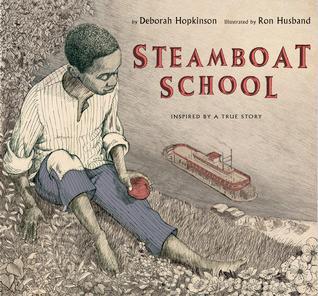
Read Aloud Book: Steamboat School
Story: Deborah Hopkinson
Illustration: Ron Husband
ISBN-13: 978-1423121961
C3 Framework Key term: Freedom: The lack of coercion or limitation of a person’s thoughts or actions; some definitions include the actual ability of an individual to do what he or she wishes.
Synopsis
James attended a school in the basement of the church. A freed slave, Reverend John Meachum, aspired to teach the children reading, writing, mathematics, and social studies. When Missouri state law forced him to close the school, Reverend John established a new school on the federal water of the Mississippi River.
Discussion
Say: Slaves in the south were not allowed to learn to read and write. They were not allowed access to books, paper, pen, and ink. In some states, the laws extended to free black people. In 1847, The State of Missouri took away the educational rights of freed slaves. The law required that they will not be taught reading and writing, and will not hold assemblies, except in the presence of a sheriff or other public officer. Ask: Why did states take away the right to learn? Say: Literacy was power. People who could read and write could write freedom papers, read about the abolitionist movement, and write to others. They could read the Bible and challenge statements made by white people. Most importantly, educated black people would establish their equal intellectual capacity, hence highlighting the unethical act of slavery. Being able to read the newspaper, enabled slaves to learn about the civil war and reflect on important concepts such as human rights. They used these ideas to confront slaveowners and demand their rights.
Ethics Connection
Say: Today, universal declarations of human rights hold that education is a human right. Everyone, regardless of their race, ethnicity, gender, and religion, should receive an education. However, access to education is a worldwide concern. In some countries, such as Somalia, Niger, Liberia, and Mali, the majority of girls ages 7-16 years from low-income families have never been to school. Ask: How can education help people live a better life? Students may mention, better jobs, healthy life habits, understanding one’s rights, greater access to information and communication, dignity, sense of equality, sense of participation as an equal citizen in informed decision-making, access to technology, and more opportunities for mobility to a new city or country to improve living conditions. Say: In groups, discuss the following ethical dilemma: Henry White owned fifty slaves in 1820. He treated his slaves kindly and wanted them to learn how to read and write. As he was their owner, he considered teaching the slaves in secret. However, if officials caught him, he would pay a large fine and spend time in prison, jeopardizing the health of his household. Henry was torn between his guilt and fear. What should he do?
Fun Activity
Say: The Mis-Education of the Negro by Carter G. Woodson is a well-known, thought-provoking book on education and discrimination. Over the years different book covers were designed, to depict the psychological, economic, and spiritual harm of lack of quality education. These covers show the role that denying education played in oppression. Examine at least three different book covers for this book online. Then, illustrate a new book cover that represents the concepts we discussed today in class.
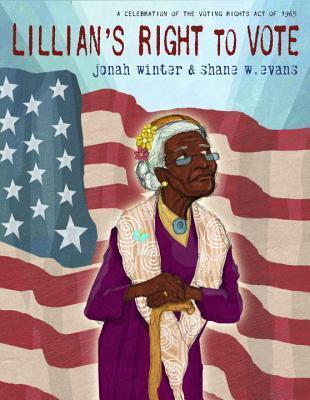
Read Aloud Book: Lilian's Right to Vote
Story and Illustration: Jonah Winter, Shane W. Evans
ISBN-13: 978-0385390286
C3 Framework Key term:Role (of citizens): The actions of citizens to fulfill their responsibilities to their political community.
Handouts
The Things that Qualify a Colored Man to Vote in the Southern States (PDF version only)
Download and Print the PDF
Synopsis
On her way to the polling place, a senior African-American woman thinks about the people who wanted to vote but were denied, starting with her great-great-grandparents. She reflects on the accomplishments of the people who bravely fought to give African-American people the right to vote.
Discussion
Say: The Voting Rights Act of 1965 prohibits racial discrimination in voting. The Act enforces the 15th Amendment of the United States Constitution: “The right of citizens of the United States to vote shall not be denied or abridged by the United States or by any State on account of race, color, or previous condition of servitude.” Distribute copies of a page from the pamphlet “What a Colored Man Should Do To Vote” (included in this lesson plan). Ask: Do the requirements listed in the pamphlet seem ethical? Spark a discussion and say: Think about a person who does not know how to read and write and has no knowledge about the merits and agendas of the candidates. On elections day, how can he or she be sure they are voting for the right person? To what extent they are vulnerable to manipulation by political advocates who stand next to the entrance to the polls? Encourage students to think critically about the issue and ask: Should concerns about manipulation of voters be sufficient reason for denying voting rights? Could the restriction of voting rights to some segments of the population become a slippery slope and possibly extended denial of voting rights to other groups of people as well?
Ethics Connection
Distribute copies of the handout, History of Voting in America. Say: We will use Washington State as a case study for examining the role of states in enabling citizens to vote. Each state has the autonomy to decide on the conditions under which citizens cast ballots. These conditions affect the ability of citizens to vote (given that citizens may have accessibility problems due to work, health, family, or other reasons). Today, there are still differences among states on multiple conditions including: (1) permitting no-excuse early voting and absentee voting; (2) online voter registration; (3) same-day voter registration. Provide a current example: A few Southern states require voters to show a state-issued photo ID such as a driver’s license or a passport at the polls, to prevent voter fraud. However, statistics show that hundreds of thousands of people, concentrated in high-poverty areas do not have either of those. Ask: What are the pros and cons of granting individual states the autonomy to determine voting accessibility laws? Set ground rules for responding to this question. Remind students to use respectful language and to use the following steps when responding to each other: a. Restate the opinion you agree or disagree with; b. Indicate what you agree or disagree with. C. Support your reasoning with an example or evidence.
Fun Activity
Distribute copies of the one-page article Selma-to-Montgomery March National Historic Trail & All-American Road available at the National Park Service website. Ask students to draw a map that shows the 54-mile Selman-to-Montgomery National Historic Trail; it should include nearby highways, rivers, and towns.
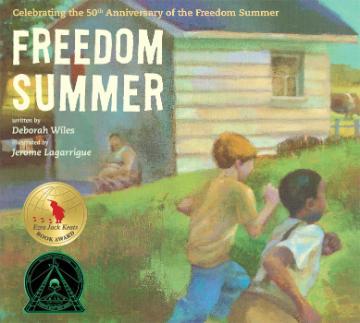
Read Aloud Book: Freedom Summer
Story: Deborah Wiles
Illustration: Jerome Lagarrigue
ISBN-13: 978-0689878299
C3 Framework Key term: Human rights: Rights or freedoms possessed by all people by virtue of their being human.
Synopsis
An African-American kid and a white kid are best friends. However, they cannot go to the same swimming pool or store together. When new town laws permit African-American people to swim in the town pool, the boys get their hopes up, only to have them crushed when the county dump truck fills the pool with asphalt. This is a story about the resistance of Mississippi residents to the Civil Right Act. It is also a story of friendship and empathy.
Discussion
Distribute copies of the Civil Rights Act. Say: The Civil Rights Act of 1964 banned discrimination and segregation based on race, color, religion, sex, or national origin. However, opponents of equality threatened African American citizens through beating and lynching, to keep them away from exercising their rights to vote and to access integrated public areas. They warned white people against entering shops where white and black people mix. African Americans protested against the lack of implementation of the law. In reality, local communities did not work towards integration.
Ethics Connection
Show the 3-minute video, What Was “Freedom Summer”? Available at the PBS LearningMedia website. Say: In the summer of 1964, thousands of civil rights activists came to Mississippi to support the Mississippi Freedom Democratic Party, which invited whites and blacks, to run its candidates for the Senate and Congressional elections. The party did not gain seats at the Democratic National Convention and did not have representatives in the Congress. However, it attracted sufficient attention of politicians to lead the way to the Voting Rights Act of 1965. Write: America’s Civil Rights 1857—1992. Say: Both regarding the sequence of events and civic actions, Freedom Summer had a central role in promoting the rights of African Americans. In this activity, you will work with two sources: a Civil Rights Timeline and primary source documents available on the website of the National Museum of American History. Review both sources and write one paragraph in response to the following question: What was the important role of Freedom Summer in the sequence of events that led to establishing equal rights for African American citizens? Allow students to focus on one domain (e.g., education, politics, social sector).
Challenge Activity
Say: In the summer of 1964, Brandenburg, a Ku Klux Klan leader invited a reporter at a television station to cover a KKK rally, which included hate speeches. Brandenburg was charged by the state of Ohio for advocating for violence. He was sentenced to one to ten years in prison and a $1,000 fine. Subsequent appeals were rejected. Brandenburg then appealed to the U.S. Supreme Court in 1969. The U.S. Supreme court held that a government could not constitutionally punish abstract advocacy for violence. The judge contended that the government could punish negative actions but not negative thoughts or ideas. Ask: Comment on this case. Do you agree with the ruling? How do you think this ruling affected racial tensions?
Fun Activity
Say: Imagine you are working for a television broadcasting company during the summer of 1964. In groups, prepare a 2-minute video clip covering one of the summer events.
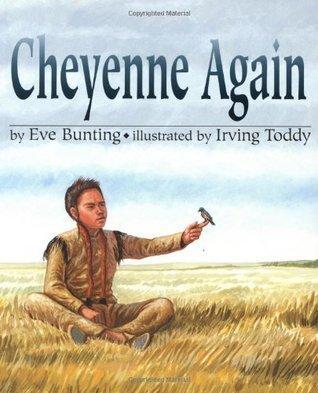
Read Aloud Book: Cheyenne Again
Story: Eve Bunting
Illustration: Irving Toddy
ISBN-13: 978-0547531762
C3 Framework Key term: Cultural preference: A choice grounded in cultural habits or deeply-held cultural beliefs about appropriate behavior in certain settings or situations.
Handouts
Code Talkers Worksheet (PDF version only)
Download and Print the PDF
Synopsis
Young Bull is forced to leave his reservation and attend a boarding school. He needs to change his hair and dress style, language, and religion. He studies US history from the perspective of white men. He has to adapt but never forgets his Indian identity. Note: Consider showing the documentary, Unspoken: America's Native American Boarding Schools (57m).
Discussion
Say: Beginning in the late nineteenth century, American Indian children were required to attend government- or church-operated boarding schools. Native American children were forbidden to speak their Native languages and practice their religion. Ask: What was the purpose of boarding schools? Say: State governments rationalized it as an opportunity for Native Americans to have more economical opportunities within the larger, dominant society. Children learned the life skills and vocational skills to assimilate into American society. Ask: Why did states build boarding schools and not just day schools? Say: Some public officials advocated for taking Native American children from their tribes at an early age and let them to reunite with their families when they are young adults. To prevent children from running away, starting in 1879, some of the schools were built off reservations. In some cases, schools were deliberately constructed at a great geographical distance to discourage children from returning home in the summer. By minimizing contact with their tribes, public officials aimed to make children forget their “savage” habits and develop “civilized” ways of living.
Ethics Connection
Say: The experience of Native Americans brings the issue of cultural heritage ethics: Do citizens have the liberty to preserve their cultural? In your table groups, you will hold debates about the responsibility of the federal government to legally protect the freedom of citizens to practice and express their cultural heritage. Contextualize each side in the argument: proponents of a “melting pot” approach aspired to turn a nation of immigrants into a homogenous society with shared values and a unified American identity. Proponents of cultural diversity aspire to safeguard cultural heritage and view cultural wisdom and craft as intellectual and moral assets.
Fun Activity
Note: This activity may be conducted online using the map of boarding schools in the US, made available by the Carlisle Indian Schools Digital Resource Center or paper copies of the map, available in PDF format. Point at how the geographical distribution of schools reflects the President Andrew Jackson’s Removal Act, a bill that forced Native Americans to settle west of the Mississippi River. Say: Practice your democratic right to write to a Congressman. Select one of the states with Indian boarding schools. Write a letter to your state representative. Start with your concern about Indian boarding schools. Back up your concerns. Using respectful language, state your recommendation for a change in public policy.
Conclude
Say: In later years, cultural heritage was increasingly viewed as an asset. Use the Code Talkers worksheet to learn how Native American languages helped the US in World War II.
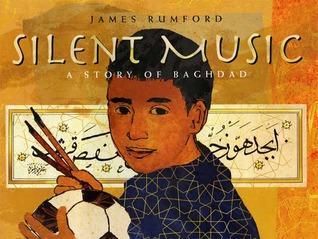
Read Aloud Book: Silent Music
Story: James Rumford
Illustration: James Rumford
ISBN-13: 978-1596432765
C3 Framework Key term: Investment in human capital: Efforts to acquire or increase human capital including education, training, and practice
Synopsis
Ali loves calligraphy. He spends a lot of time practicing his writing and focusing on the hardest words. His mother calls him Yakut because he copes with the bombing of the city by dedicating himself to the practice of calligraphy. In the 13th century, Baghdad was under Mongolian attack. Yaqut al-Musta’simi hid in a minaret within one of the Baghdad mosques. The calligrapher secluded himself from the traumatic devastation the city and focused on his pen, ink, and paper. Yakut’s inventive work influenced Persian and Ottoman calligraphers in subsequent centuries.
Note: A teacher resource on Calligraphy in Islamic Art is available on the website of the Victoria and Albert Museum. A resource on the 2003 war in Iraq is available on the History Channel website.
Discussion
Say: Calligraphy comes from the Greek word for “beautiful writing.” Calligraphy started early in the Islamic era. It was a “democratic” form of art because Arabs who could read and write, regardless of their wealth or social status, could practice calligraphy. Despite the fact that it crossed all socioeconomic groups, people regarded calligraphy as the noblest of occupations, because it integrated religious texts and the symmetrical and decorative beauty of the Arab font. One of the well-known types of calligraphy, a cursive script known as Nashki, was used by scribes to copy sections of the Quran on papyrus. Later in the middle ages, the artistic effects of calligraphy were supplemented by illustration and the way in which books were bound.
Ethics Connection
Introduce today’s ethical topic: The equality of all people is a foundational concept in ethics, and it is closely related to the virtues of caring, compassion, and social responsibility. Say: Islamic scholars innovated legal thinking about human rights. Some of the terms they discussed were human dignity and equality before the law. Calligraphy is one of the multiple paths of scholarship that enabled individuals to improve their economic status. Public access to books was another. The first publication industry was in the Muslim civilization in the 8th century. Almost every Mosque or a learning institution in middle ages Muslim communities included public book collections. Baghdad (before the Mongols’ attack) had 36 public libraries and over 100 book-dealers. The collections included volumes that captured the state-of-art knowledge in religion, science, Greek philosophy, and languages. Write on the board: Education as a Gateway to Equality. Say: In groups, create a short presentation about the relationship between knowledge and learning and equal access to one of the following: legal rights, jobs, housing, healthcare, and democracy.
Challenge Activity
Invite students to comment on the morality of using the concept of group affiliation to advocate for equality. For example, the notion that all members of the Islamic communities are equal does not include members of other religious communities. To what extent does such notion serve local interests and ignores global and long-term interests?
Fun Activity
Say: Go to Stanford University’s Arabic Alphabet Chart. Click on each letter and watch a short video demonstrating how it is written. Practice writing some of the letters.
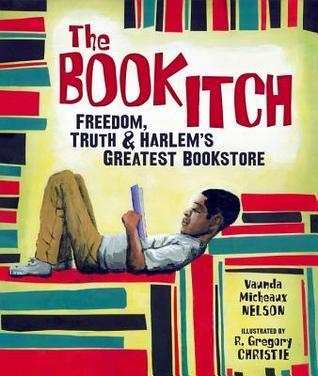
Read Aloud Book: The Book Itch
Story: Angeline Sparagna LoPresti
Illustration: Phyllis Hornung
ISBN-13: 978-0761339434
C3 Framework Key term: Collective action: Activities are undertaken by people with a shared interest in promoting change or on an issue abouthich members of the group agree.
Synopsis
This story is told by Lewis, whose dad established the National Memorial African Bookstore – a store devoted to books by and about black people. The father, Lewis Michaux believed that knowledge is power and referred to the store as “The House of Common Sense and Proper Propaganda.”. The store became an important landmark for the civil rights movement. Michaux became Malcolm X advisor. Malcolm X advocated for public policy changes to provide better food, clothing, housing, education, and jobs to black people.
Discussion
Contextualize: African American leaders such as Frederick Douglass and Booker, T. Washington, recognized literacy as fundamental to progress. In the south, segregated public libraries for African Americans were underfunded. In the North, public libraries offered few or no books about African scholarships and cultural tradition. Malcolm X is an example – he taught himself to read and write in prison by copying a dictionary and memorizing the definitions of words. His life, sense of freedom, and public work changed as a result. Say: Lewis Micheaux was not the first to understand that knowledge is power. Slaveowners in the southern states including Alabama, Georgia, Louisiana, North and South Carolina and Virginia knew that to control their slaves could they needed to deny them education and access to books. A white person caught teaching black people to read and write would be sent to jail and forced to pay a large fine. Ask: What power does literacy give to people? How can people use information and literacy to address discrimination and poverty? Say: Michaux believed that education and knowledge are essential for gaining self-respect and self-esteem. Ask: How can education promote self-esteem? Why does it matter that bookstores will have books written by African American authors and that newspapers will publish articles by African American journalists?
Ethics Connection
Say: We will hold a debate about the ethical responsibility of book publishing companies to publish books written by African American authors. Teams in favor of a new bill requiring at least one new book a year may mention the importance of African American voice and authentic identity in the books. Opponents may mention that other criteria, such as economic considerations of sales, should determine what books will be published. Students can work in groups to conduct research online. Say: You should model respectful listening when each team presents. You may not interrupt the presenters. However, you can take notes and write down your questions. We will allocate three minutes for questions and answers after each team’s presentation.
Fun Activity
Say: Imagine you own a book publishing company and would like to promote a debut novel by an African American author. On one page, create a marketing plan for publicizing the book. What messages will you send to the press and social media? Focus on encouraging the public to read more stories written from the perspective of African American writers.
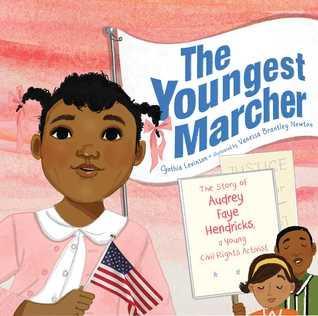
Read Aloud Book: The Youngest Marcher
Story: Mary Watson
Illustration: Mary Watson
ISBN-13: 978-0688141332
C3 Framework Key term: Democratic principle: A principle that should guide the behavior and values of institutions and citizens in a democracy.
Handouts
Radio and Television Report to the American People on Civil Rights, June 11, 1963 (PDF version only)
Download and Print the PDF
Synopsis
Audrey Faye Hendricks wanted to help end segregation in Birmingham. Although she was young, she marched and fought for integration alongside the adults. When she heard their plans to picket and march and fill the jails she stepped up and volunteered. She marched in the first youth march in the summer of 1963. She went to jail for seven days and on her fifth day they couldn’t fit one more person into the cells. Although it was difficult, she fought for what she believed in. Audrey and the other children who marched that summer inspired youth protests all over the country. This event, and a later event in Alabama State University, prompted President Kennedy to take action.
Discussion
Provide a historical summary: In 1963, hundreds of college students and students in the elementary, middle, and high school grades marched in the Birmingham Children's Crusade. Their plan was to peacefully walk downtown to talk to the mayor about integration of schools. The local police stopped the children using fire hoses and police dogs. Many children were arrested. Say: Although Audrey was young, Audrey volunteered to march for her beliefs. She made this choice knowing the risk. Ask: Why do you think she did this? Say: Some youth were encouraged by parents and elders in the community, who told them that their generation will make a difference. Others liked to study and wanted to compete academically with white children. And other children wanted to have the same school facilities and educational opportunities as white children. Some of the young marchers defied their parents and teachers by skipping school and joining the march.
Ethics Connection
Show students a segment from President Kennedy’s civil rights address on June 11, 1963 (A transcript of this segment is included in this lesson plan; for a transcript of the full speech, see the American Presidency Project). Write on the board: American Ideals versus American Realities. Ask: How does President Kennedy contrast American ideals and realities in his speech? Say: President Kennedy knew that passing an Act that protects the rights of African American people is not enough to change their lives. He needed American citizens to buy into this law and support it in their everyday actions. In groups, imagine you are in 1963 and you need to self-reflect what you can do to support the new civil rights law. Make a list of things you can do, and how you can encourage others to support equal opportunities and respect to all people.
Fun Activity
Say: We are going to make picket signs like the ones Audrey and the other child marchers used. In groups, you will come up with a short phrase about equality and then on a poster board you will write your phrase and add an illustration. On a separate sheet of paper, you will write what equality means to you and how your phrase represents the principle of equality. In your writing, you should also explain the decorations on the sign.
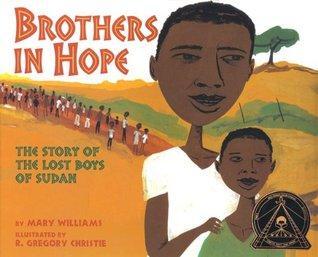
Read Aloud Book: Brothers in Hope
Story: Mary Williams
Illustration: R. Gregory Christie
ISBN-13: 978-1584302322
C3 Framework Key term: Triggering event: An event, sometimes unexpected, that has an immediate consequence, causing another event or process.
Synopsis
When the war reached young Garang’s village in Sudan, he was separated from his family and village community. Together, with thousands of other Lost Boys, he embarks on an arduous journey to Ethiopia to find safety. He assumes the responsibility of a leader in a group of 35 children and takes care of five-year-old Chuti, who is too weak and afraid to endure the journey. In Ethiopia, they find temporary shelter at a refugee camp. The children attend school and pray for the safety of others. The war in Ethiopia sends the boys on another long journey – to Kakuma refugee camp in Kenya. A refugee worker named Tom listens to Garang’s story and works to get international help. As he grows older, Garang tries to improve the conditions in the camp. He helps form a drama club and a soccer team and becomes a health educator. After several years, Tom helps Garang and many other boys immigrate to the United States.
Discussion
Contextualize: Sudan is the largest country on the continent of Africa. The climate of Sudan is tropical towards the Equator in the South and arid in the northern desert. The country suffers period droughts, and people often do not have sufficient access to water. The civil war in Sudan (1983—2005) was between the government and the Sudanese People's Liberation Army, who wanted autonomy of governance in Southern Sudan, control of natural resources, such as oil, and freedom of religion. The Republic of South Sudan gained its independence in 2011. Show the map of the route taken by the Lost Boys to Kenya and Ethiopia and photos depicting the geography of Sudan, Ethiopia, and Kenya. Ask: What did you notice when you looked at the map and the photos? How did the map help you understand the dangers that the boys faced?
Ethics Connection
Distribute a copy of USAID’s map of humanitarian assistance to South Sudan. Ask students to review the program key and color-coded estimated food security levels, on the left side of the map. Say: to address hunger, USAID, through partnering organizations, distributed emergency food assistance to households, treated malnourished young children in outpatient clinics and provided agricultural counseling. In groups, you will prepare a presentation about your group’s answer to one of two questions. Question 1 is: What is the moral obligation of countries to provide humanitarian aid to reduce world hunger? You may address this question through virtues of compassion and caring and countries’ interest such as preventing war and conflict. Question 2 is: How can organizations ensure that aid workers distribute resources in an impartial, fair, and professionally competent manner? You may propose strategies such as, training and supervision, and aid that includes both the goods and the means to protect it.
Fun Activity
Say: Imagine you have accepted a job at the CIA and need to prepare a debrief using the “World Factbook.” Access information about South Sudan. Prepare an “information card” on one page (front and back). The card should include at least four of the following topics: geography, people and society, government, economy, energy, communications, transportation, military and security, and transnational issues.
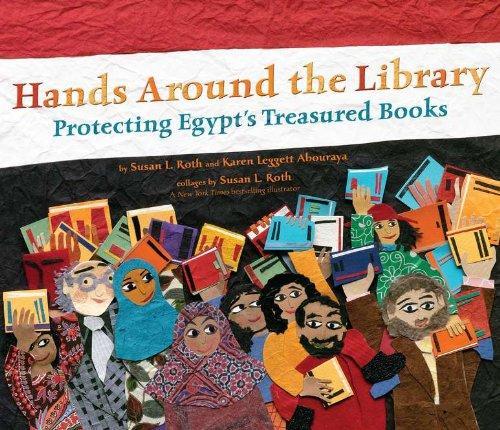
Read Aloud Book: Hands Around the Library
Story: Rachel Rodríguez
Illustration: Julie Paschkis
ISBN-13: 978-0805077407
C3 Framework Key term: Place: A location having distinctive features that give it meaning and character and distinguish it from other locations.
Synopsis
Hands Around the Library: Protecting Egypt’s Treasured Books tells the story of protesters who protected the Alexandria Library from vandalism during the 2011 protests in Egypt. Beginning in January 2011 there were many organized protests for democracy and freedom. During one of the marches, large crowds approached the library in Alexandria and discovered that the library was not protected from potential damage to the books. People broke away from the march and stood together, holding hands to protect the library.
Discussion
Contextualize: The Alexandria library was built on the ashes of the Great Library of Alexandria that begun under Ptolemy I (305-285 BCE) and was completed by Ptolemy II (285-246 BCE). Ptolemy II asked rulers and scholars in different nations to contribute books to the library. He aimed to have the largest and most important book collection in the world. The library included both original and copied versions of manuscripts by famous philosophers, poets, and scientists. It also served as a research and learning, enabling local scholars to achieve highest knowledge level in almost all subjects. Ask: What does building a great library in Alexandria say about the importance of this city in the Hellenistic world? Say: Alexandria, because of it location and port, was the center of commerce. The library made the city a cultural and learning center. Note a fun fact: The Lighthouse at Alexandria, Egypt was one of the seven wonders of the ancient world.
Ethics Connection
Say: The preservation of ancient books helps scholars compare modern and ancient ethical thinking representing shared values and moral principles. Ask: In your opinion, how different are ancient and modern ethics? Say: Ethical decision-making in modern times is applied to situations that did not exist in ancient times (e.g., internet ethics). In addition, early philosophers considered individual examples rather than systematic principles. However, modern ethical thinking is still influenced by Aristotle, Socrates, and Plato, who argued that character virtues help one live life at its best and promote the well-being of self and others. On the board, write “knowledge of history, geography, and science promotes ethical decision-making.” Say: Write at least two paragraphs discussing this argument.
Fun Activity
Schedule a screening of the 45-minute Ancient History Documentary, Ancient Mysteries: The Lost Treasure of Alexandria Library. Ask students to comment on the ending statement: “I think the wonderful thing about the library of Alexandria is that they did it. That the Ptolemies were willing to support this group of scholars that didn’t do anything for the Greek economy, they didn’t bring in money, they didn’t make any contributions to Ptolemies’ life style, but they still supported it. It was a sense of learning for its own sake.” Ask: What is “learning for its own sake?” Say: This phrase contrasts learning goals (for gaining knowledge) and performance goals (for receiving a good report card or public status). The love of learning was considered virtuous in ancient times and is still a highly regarded virtue today.
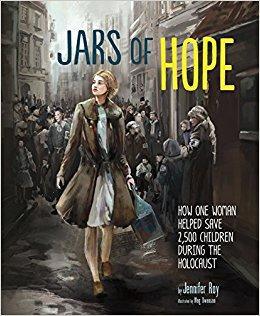
Read Aloud Book: Jars of Hope
Story: Kobi Yamada
Illustration: Mae Besom
ISBN-13: 978-1491465530
C3 Framework Key term: Choice: A decision made between two or more possibilities or alternatives.
Synopsis
Irena learned from her father that money, religion, and race do not determine whether people are good or bad. During World War II, she applied this moral principle and saved the lives of 2,500 children from death. This book tells the story of the creative and brave ways in which Irena and her friends saved the children from death, made sure they were protected and cared for and worked to connect them with their families after the war. Note: Additional information about Irena Sendler is available at the World Holocaust Remembrance Center, Yad Vashem’s website.
Discussion
Contextualize: Warsaw is capital of Poland. Before World War II, more than 350,000 Jewish people lived in the city. In 1939, Germany invaded Poland. The following year, the German authorities ordered all Jews to move to a designated residential area, which they sealed off from the rest of the city. A 10-feet high brick wall topped with barbed wire and armed guards ensured seclusion of the ghetto. Warsaw ghetto was crowded, with seven people per room and almost no food, medical supplies, or heating. Within less than two years, 83,000 Jews died of starvation and disease. In 1942, the Germans started mass deportation of Jews from the Ghettos to death camps. The deportation of Jews led to the establishment of The Council for Aid to Jews (Zegota). Irena Sendler, 29-year-old social worker, employed by the Welfare Department of the Warsaw municipality joined Zegota. She sneaked the children out between 1942 and 1943. She built on her contacts with orphanages and institutes for abandoned children to find safe hiding places. Irena helped children reconnect with their families after the war, although in many cases, they could not find surviving family members.
Ethics Connection
Say: Acts of public disobedience against immoral authority were important during World War II. We will explore the uprising in the Warsaw ghetto as a case study. In January 1942, when only 55,000 Jews remained in the ghetto, they organized to resist the next deportation. They did not report as ordered. Instead, Jewish fighters conducted surprise attacks on German troops and escaped through rooftops. The resistance lasted until April when on the first day of Passover, German tanks and artillery troops attacked the ghetto. The fighting lasted three days. After unsuccessful attempts to take over the ghetto, the Germans burned down the entire ghetto. The revolt diverted several troops of Nazis resources from the battlefields, aiding the Nazi defeat. The revolt also promoted a sense of dignity that replaced the shame of obedience. It provided moral courage to others who resisted the Nazi soldiers. On the board, write: “When the Will Defies Fear.” (Taken from a quote by Robert G. Ingersoll). Say: In groups, create a cause-and-effect diagram that demonstrates how acts of moral courage inspired others in World War II. Consider this quote from the last letter from Warsaw Ghetto revolt commander Mordechai Anielewicz: “With the aid of our transmitter we heard the marvelous report on our fighting by the "Shavit" radio station. The fact that we are remembered beyond the ghetto walls encourages us in our struggle.”
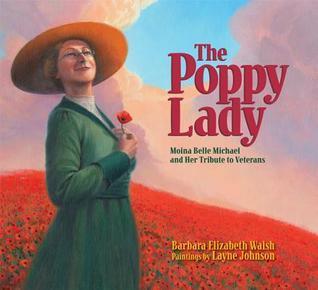
Read Aloud Book: The Poppy Lady
Story: Barbara Elizabeth Walsh
Illustration: Layne Johnson
ISBN-13: 978-1590787540
C3 Framework Key term: Personal values: Ethical and moral commitments that guide individuals’ actions and interpersonal relationships.
Synopsis
At an early age, Moina Belle Michael started a school and became an educator. Years later, during World War I, she continued to look for ways to improve the well-being of others. She volunteered at the YMCA and created ways to cheer up soldiers before they left for war.
Discussion
Expand: World War I, also called The Great War, broke out in Europe in 1914. Germany and Austria-Hungary led their allies against Britain, France, and Russia. In 1917, Germany attacked American ships attempted to form an alliance with Mexico against the United States. Consequently, the US declared war on Germany in 1917. In total, more than one millions American troops were sent to Europe. It was the first time that war included airplanes, tanks, and poison gas. US citizens took action to support American troops. Women joined the labor force. Children helped sell war bonds. The work of every citizen counted. Note: Additional resources are located on DOCSTeach, a website of the National Archives. Ask: Why volunteer work of citizens is important during wartime? How can it support war veterans?
Ethics Connection
Use the Library of Congress Primary Source Set to introduce students to available resources. Say: The work of Moina Belle was significant some ways, including promoting a proper public tribute to soldiers and supporting the well-being of all those who served after the war. In groups, discuss the ethical responsibility of the government to support returning soldiers. If you have internet access, research the history of assistance for veterans using the Department of Veterans Affairs website.
Challenge Activity
Say: One of the main advantages of German forces in World War I was the use of poison gas. When the US joined the war, it attempted to match the military advantages of German forces. The US government contracted with privately held chemical companies to manufacture point gas. Poison gas is considered non-conventional weapon and morally worse than other weapons because of the suffering it causes. After the war, the 1925 Geneva Protocol prohibited the use of chemical weapons in war. Years later, the Chemical Weapons Convention, which took effect in 1997, provided more comprehensive guidelines by prohibiting the development, production, acquisition, stockpiling, retention, transfer or use of chemical weapons. This agreement was signed by the Member States of the Organisation for the Prohibition of Chemical Weapons, who comprise 98% of the world population. In between these years, the American government upheld the moral standard of avoiding the use of chemical weapons and avoided the use of poison gas in World War II. Say: In groups, debate whether or not the US made the right decision to avoid using this weapon in World War II. You may use an article from American Heritage as part of your work.
Fun Activity
Say: Imagine you have been contracted by the Department of Veterans Affairs to design a new Veterans Day poster. Review posters from previous years on the Veterans Days Poster Gallery. Use your knowledge about World War I to inspire your design.
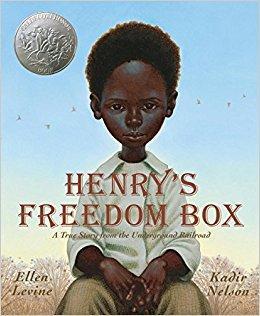
Read Aloud Book: Henry's Freedom Box
Story: Ellen Levine
Illustration: Kadir Nelson
ISBN-13: 978-0439928786
C3 Framework Key term: Human rights: Rights or freedoms possessed by all people by virtue of their being human.
Synopsis
When he was a child, Henry was separated from his family when his master gave him to his son. Henry worked at a tobacco farm in Virginia under a harsh master. However, he considered himself lucky, because his wife and children lived with him. When his wife and children were sold without a warning to a plantation owner in North Carolina, Henry knew he will never see them again. In 1849, with the help of a doctor who believed that slavery was wrong, Henry shipped himself in a crate to Philadelphia, where he started a new life as a free man.
Discussion
Expand: This book tells the story of a real person, Henry "Box" Brown (1816 –1897). After his successful escape, Henry faced a dilemma – listen to the advice of abolitionist leaders and keep his story confidential, to protect himself from being caught by slave catchers, or make his story public and inspire other others to dare to escape. Ask: What would you advise him to do? Why? Say: Brown presented about his story at the New England Anti-Slavery Society Convention in Boston. He also toured the region and spoke about his life as a slave and his escape. His story, as he told it to a book publisher, was published in print. Ask: Why slaves’ testimony was important to antislavery actions?
Ethics Connection
Contextualize: One of the many troubling realities of slavery was that marriage was a civil right available only to free people. Even after giving their slaves permission to marry, slave owners had the right to separate husbands, wives, and children at any time. Despite constant fear of separation, family values were important to slaves, and they saw family relationships as important to their survival. The right of former slaves to marry did not automatically take effect after the Civil War. The Civil Rights Act of 1866 aimed to ensure the equal right of all US citizens to make and enforce contracts (including marriage contracts), sue and be sued, give evidence in court, and inherit, purchase, lease, sell, hold, and convey real and personal property. The Congress first enacted the Civil Rights Act in 1865, but President Andrew Johnson vetoed it. In 1866, Congress passed it again, but Andrew Johnson, again, vetoed it. It took a two-thirds majority in both the House and the Senate to override the president’s veto. Introduce group activity: The constitution grants the president the power to refuse to sign the legislation. In groups, discuss the pros and cons of such power. How can it be used to protect people? How can it be used to deny human rights?
Fun Activity
Say: Access the list of presidential vetoes on the United States House of Representatives’ website. Create a graph showing statistical analysis of data from this table. For example, you can compare the number of total vetoes to the number of vetoes overridden by Congress. You can present data across all presidents, by time periods, by grouping presidential terms, or by grouping Congressional terms. Make meaning: What have you learned from this graph?
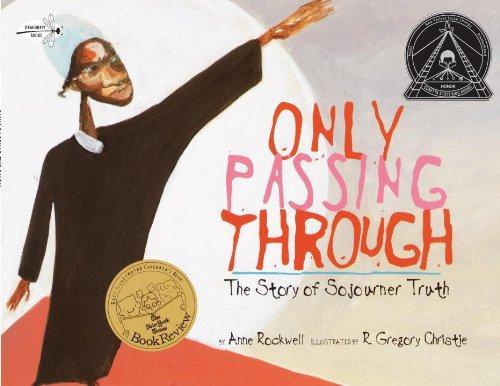
Read Aloud Book: Only Passing Through
Story: Anne Rockwell
Illustration: R. Gregory Christie
ISBN-13: 978-0544357693
C3 Framework Key term: Rights (of citizens in the U.S.): Rights enumerated in the Bill of Rights as well as other rights.
Synopsis
Only Passing Through is the illustrated biography of Sojourner Truth, an African-American abolitionist and human rights activist. The story begins with her being sold at an auction in 1806 and follows her life in two households. Her persistence and hard work lead her to freedom, the acquisition of literacy skills, and eventually, to promoting public awareness regarding the horrors of slavery.
Discussion
Say: One of the important contributions of Sojourner Truth to the well-being of African Americans was right after Abraham Lincoln announced the Emancipation Proclamation. Thousands of slaves escaped the southern states and sought new life in Washington DC. But they had no place to live. The government build for them Freedman’s Village in Arlington, VA. The camp provided housing, a school for children, job training school, a senior house, a hospital, and churches. Sojourner Truth lived in the village for one year in 1864. She was a school teacher and a job search counselor. She helped residents organize to defend themselves against white people who raided the village to kidnap children for slave labor. Ask: Why was the moral courage and spirit of people like Sojourner Truth so important to the success of the emancipation of slaves?
Ethics Connection
Ask: Have you ever heard the phrase, “forty acres and a mule?” Say: This phrase represents the government intention to help former slaves transition to free life. In 1865, General William T. Sherman issues Special Field Order No. 15, which confiscated land from South Carolina to Florida. A number of African Americans received legal titles for forty-acre plots of land. Military mules were approved for distribution among the new settlers. However, the hopeful recipients did not receive the land. President Andrew Johnson returned most of the land to its original owners. Confiscating land was viewed as a violation of property rights and as unnecessary punishment of ex‐Confederates. Moreover, this solution could hardly address the needs of more than 4 million newly freed slaves who lacked land and shelter. Until today, there is an ongoing debate about the obligation of the US government to provide reparations to descendants of slaves. In groups, discuss your opinion about reparations. You may use NPR resources from their page, Making Amends.
Fun Activity
Say: Imagine that you are working with Lincoln on his executive. How would you write the executive order if you wanted to prevent discrimination and inequality? Use the transcript of the Proclamation, available on the National Archives website. Write down or type at least one section of the Proclamation and add your suggested text. Find a peer reviewer to review your suggested edits.
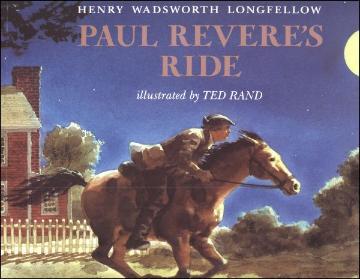
Read Aloud Book: Paul Revere’s Ride
Story: Henry Wadsworth Longfellow
Illustration: Ted Rand
ISBN-13: 978-0140556124
C3 Framework Key term: Event: An occasion, occurrence, or incident that takes place in the past. Events can be of various lengths.
Handouts
Paul Revere's Ride by Henry Wadsworth Longfellow (PDF version only)
Download and Print the PDF
Synopsis
Paul Revere’s Ride tells the story of Paul Revere and his historic ride to warn the town that the British soldiers were coming. It details Revere making the plan with the other soldier and continues through his ride and the resulting interaction between the British and American soldiers. The book is written in a poem-style with a rhyme scheme.
Discussion
Contextualize (show the timeline of the American Revolutionary War): Paul Revere’s Ride was on April 18, 1775. Two months later, the Congress appointed George Washington commander-in-chief of Continental Army. In multiple points in time, the revolutionary war nearly failed. The first time was the Battles of Lexington and Concord, which were saved by the warning of the midnight massagers. Although the British soldiers outnumbered the patriot militia, the resistance of the Patriots surprised them and forced the British to retreat. Ask: With limited weapons and a shortage of troops, how did the determination and courage of the Patriots win against the well-trained British soldiers? Can you think of others times in history when a small army won against a larger army because of the ideals it fought for?
Ethics Connections
Distribute copies of the poem, Paul Revere’s Ride, written by Henry Wadsworth Longfellow, and first published in The Atlantic in 1861. Say: The poet used the famous story from the Revolutionary War to promote the moral courage of people in the North on the eve of the Civil War. Mention that the poet did not intend to convey a historically accurate account of the event but to spur reflections about values. Say: The poet recognized that people hesitate to do the right thing when risk is involved. Moral courage or its absence can make the difference between moral attitudes and moral action. In groups or pairs, highlight the lines that demonstrate the Longfellow’s focus on courage in the face of danger. Make a list of all the risks taken by Paul Revere. Ask students to read aloud their lists and write the merged list of risks on the board. The list might include Injury, death or imprisonment; revealing confidential information if captured; losing his business; putting his wife, children, and other family members at risk; losing his good reputation if the news turned out false.
Challenge Activity
Say: Multiple forms of oppression led to the Revolutionary War. One was a violation of people’s right to privacy. In 1765, the acting Secretary of State issued a warrant to break into the private home of John Entick in search for private papers. In court, the judge ruled that this search, although under warrant, was unlawful and unethical. The Founding Fathers ensured the secure people’s right for privacy in the Fourth Amendment, including “The right of the people to be secure in their persons, houses, papers, and effects, against unreasonable searches and seizures.” Write a paragraph that discusses how lack of privacy threatens people’s well-being, ability to defend themselves against unethical actions and the functioning of a flourishing society.
Fun Activity
Say: Write a short poem about an event in the American Revolutionary War. In your poem, link the event to moral courage needed for a current event, debate, movement, or public concern.